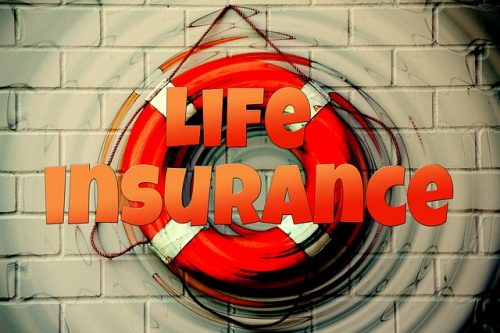So you’ve finished being smart with your money in your 20’s. When you get to your 30s, things start to make a little more sense. This is the decade where adults tend to come into their own, gaining confidence and a better understanding of who they are on a deeper level. When you arrive at this stage, the way forward starts to seem a little clearer.
Congratulations on entering your 30s! This is an important decade for your financial future, as you have hopefully established a solid career and have a better understanding of your long-term financial goals. Here are some money lessons to consider during your 30s:
- Create a budget and stick to it: It’s essential to have a budget in place to help you manage your finances effectively. Make sure to track your expenses and prioritize your spending according to your financial goals.
- Build an emergency fund: Set aside at least three to six months’ worth of living expenses in a separate account to help you deal with unexpected expenses or emergencies.
- Invest in your retirement: If you haven’t started saving for retirement, it’s time to begin. Take advantage of your employer’s retirement savings plan or start an individual retirement account (IRA).
- Pay off high-interest debt: If you have high-interest debt, such as credit card debt, focus on paying it off as soon as possible. High-interest debt can quickly become unmanageable and hinder your financial progress.
- Invest in yourself: Consider investing in yourself by pursuing additional education or certifications that can help you advance in your career and increase your earning potential.
- Be mindful of lifestyle inflation: As your income increases, it’s easy to fall into the trap of spending more. Be mindful of lifestyle inflation and continue to live within your means.
- Review your insurance coverage: Make sure you have adequate insurance coverage, including health, auto, and home insurance. Consider purchasing additional coverage, such as disability or life insurance, if necessary.
- Create a will: It’s essential to have a will in place to ensure that your assets are distributed according to your wishes in the event of your death.
By following these money lessons, you can set yourself up for financial success in your 30s and beyond.
You may even make the mistake of thinking you’ve figured it all out.
But as much progress as you’ve made, there will always be lessons to learn and experience to gain. Most likely, the money lessons you learn in your 30s were unimportant or completely irrelevant in your 20s. With age comes new responsibility, new challenges and new opportunities. Here’s how to make the most of the decade ahead.
Table of Contents
Start a 529
 Every year, the average age that couples have children continues to creep toward 30. Whether you’ve just had a child or are beginning to plan for your first, now’s the time to consider starting a 529.
Every year, the average age that couples have children continues to creep toward 30. Whether you’ve just had a child or are beginning to plan for your first, now’s the time to consider starting a 529.
A 529 is a savings vehicle designed to incentivize parents to save for their child’s education. Many states allow parents to deduct their contributions on their state taxes, similar to a retirement plan.
Some states even have a matching program to further encourage family members to save for college. Anyone can contribute to a 529, so grandparents and other relatives can forego birthday presents in lieu of contributions if they wish.
Like retirement, the sooner you save for your child’s education, the more you’ll be able to cover. In many cases, students with a 529 graduate college with no loans.
Remember not to prioritize the 529 over your own IRA or 401k. Your child can always borrow money for school, but there’s no loan you can take out for your own retirement.
Buy Life Insurance
 One of the most important aspects of being an adult is providing for your family. Life insurance allows you to take care of them when you’re no longer around.
One of the most important aspects of being an adult is providing for your family. Life insurance allows you to take care of them when you’re no longer around.
Life insurance is a necessity if you have a mortgage or children with a spouse. A life insurance policy should be enough to cover funeral costs as well as the expenses your spouse wouldn’t be able to handle without your salary.
Experts usually recommend term life insurance instead of whole. A term policy has cheaper premiums and is usually available in five-year increments, up to 30 years. Only buy enough of a policy to cover the years where you’ll have a mortgage or dependent children. You’re only throwing away money if you buy a bigger policy than what you need.
Avoid Lifestyle Inflation
Some of the biggest salary jumps you’ll see will come in your 30s. You’ll no longer be an entry-level employee or mistaken for the intern, and hopefully your paychecks will reflect that.
With large salary increases comes a desire to finally upgrade your lifestyle. Goodbye beater, hello BMW. Goodbye Goodwill, hello J.Crew.
Unfortunately, lifestyle inflation is one of the main reasons people fail to save despite earning a higher salary. Instead of getting caught up in your new status, use that salary to really make a difference in your financial future. Pay off as much debt as you can, save for a house or invest more for your retirement.
You don’t have to continue living like a college student, eating ramen for dinner and drinking cheap beer – but you also don’t have to go out to eat every day or rent a penthouse apartment. Find a middle ground where you’re making progress on your financial goals while still enjoying the fruits of your labor.
Your 40-year-old self will thank you.
15 Ways to Prepare Your Finances for Your First Baby!
Whether you planned your pregnancy or are unexpectedly expecting, there are opportunities to plan your finances and lifestyle in preparation for the arrival of your first child. Here are a few tips to help create a household budget and get your finances in order for your new family member.
-
Prepare a needs and wants budget
A needs and wants budget categorizes your family expenses into needs and wants. Although this seems like a simplistic way to budget, its an effective approach to use during major life changes like a marriage, divorce, death of a family or pregnancy. Unlike a category based budget which lists expenses by category i.e.) housing, utilities, clothing, entertainment etc. a needs and wants budgets forces us to ask the hard questions for each line item on our budget. Is this expense a need or a want? If it’s a want, how important is it at the current stage of my life? If it is a need, what things can I do to reduce this cost so I can free up some money? (i.e. switch from cable to online streaming services). A needs and wants budget is only as effective as the thoughts taken to get to the answers to these questions. Each persons needs and wants will be different.
-
Implement a starter baby fund
 A starter baby fund can help to reduce some of the financial stress faced in the first year of a child’s birth. Unlike an emergency fund, a starter baby fund is for planned spending for major one-time baby items like a crib, stroller, infant car seat etc. Although costs will vary depending on where you buy, the average cost for purchasing one-time baby expenses for the baby’s first year of life can range from $2,000 to $6,000. This amount does not include monthly recurring expenses like diapers, wipes, clothing, formula etc.
A starter baby fund can help to reduce some of the financial stress faced in the first year of a child’s birth. Unlike an emergency fund, a starter baby fund is for planned spending for major one-time baby items like a crib, stroller, infant car seat etc. Although costs will vary depending on where you buy, the average cost for purchasing one-time baby expenses for the baby’s first year of life can range from $2,000 to $6,000. This amount does not include monthly recurring expenses like diapers, wipes, clothing, formula etc.
The best time to implement a starter baby fund is when you and/or your partner are still employed and not on a reduced income due to maternity leave. Depending on your income, the number of months before your due date and your financial obligations, strive to set aside $150-$300 each pay period towards this fund. As you save and shop around for deals, you will feel less stressed knowing you have the cash to pay for the purchases, minimizing your debt load.
-
Understand your maternity and parental leave/benefits and whether your employer offers a top up
Depending on which country you live your maternity/parental leave and benefits will differ. Be sure to understand the policies for leaves and benefits and if there are monetary compensation while on leave.
The United States offers a 12-week unpaid temporary period of absence from employment for mothers of newborn or adopted children. Canada offers 52-weeks of unpaid job protected leave from work. Within those 52-weeks, the government offers 50 weeks of benefits based on income for those who qualify. Mothers are the only ones allowed to take the first 15 weeks of leave but the remaining 35 weeks can be shared between partners as they see fit.
Some employer may also offer ‘top-ups’ in addition to what is offered by the government. These are additional monies to assist a parent during part of their leave from work. Ask your employer if they offer top-ups.
-
Cut down on high cost debt
Cut down or eliminate high cost debt. High cost debt is debt that has a high interest rate like credit cards or pay day loans. Most people can relate to running a credit card balance and are probably able to manage this debt for some time on their family income. However, when a baby arrives many of us will have to live on a reduced income, then once we return to work, we will need to allocate much of our financial resources to caring for our child. High monthly interest costs are an ineffective use of money and can cause undue stress on the family. A good way to cut these expenses include:
- Use low cost debt: use low cost debt like an unsecured line of credit or a home equity line of credit (HELOC) to pay down high cost debt.
- Trim other expenses on the budget and put more than the minimum payment towards debt: Once you have lowered your cost of debt, strive to put more than the minimum payments while still setting aside money to save for baby.
- Starter baby fund: implementing this fund will help reduce the level of debt you may have once baby arrives.
-
Make a list of baby items and estimate costs for the first year
 Before you rush to buy those adorable baby clothes, make a list of all baby items you will need for the first six months to a year of your baby’s life. As an example, Today’s Parent provides a list that breaks down items into must-haves and nice-to-have items. Here is a suggested approach to preparing your list:
Before you rush to buy those adorable baby clothes, make a list of all baby items you will need for the first six months to a year of your baby’s life. As an example, Today’s Parent provides a list that breaks down items into must-haves and nice-to-have items. Here is a suggested approach to preparing your list:
- Search online to generate ideas for baby items.
- Divide your list into one-time and monthly purchases.
- Starting with the one-time purchases, go through your list and think of family members or friends that may be able to donate these items to you.
- For the remainder of one-time purchases, research online for best deals, and check consignment and thrift stores for deep discounts.
- For monthly recurring purchases like diapers, wipes, clothing etc. make a note of these costs and buy as needed or receive as donations from family and friends.
-
Buy baby furniture that has multiple functions
When buying baby items, it is important to consider cost, quality and long term use. Buying baby items that serve multiple functions can seem costly at first, but can save you hundreds of dollars in the long run. For example: buy cribs that convert into beds or infant seats that convert into boosters. Multi-functioned baby items not only save you money, but space as well.
-
Ask for a used baby/toddler book instead of a card for your baby shower
I went to a baby shower for my friends first baby. In her invitation she kindly requested guests to donate a used (or new) baby/toddler book instead of a card. This was not only creative, but a great way to start the baby’s library. Most people don’t keep cards as we all receive so many so I feel everyone liked the request and was happy to do so. She ended up not only receiving a lot of useful baby items to start out as a new mom, but she also had her baby library well underway.
-
Buy (monthly) recurring baby expenses as needed
Many excited parents-to-be stock up on baby clothes, diapers, toys and pacifiers in anticipation of their baby’s arrival. However, babies size and preferences change on a regular basis so stocking up on these items may result in wasted money. Using Amazon is one of the easiest but here are a few suggestions to use your money wisely when buying some recurring items:
- Diapers: Avoid buying large boxes of diapers when your baby is first born. Some parents may stock up on newborn diapers only to find their child has outgrown them within a few weeks. Instead, buy a couple of the smaller boxes at a time and move up in size as your baby grows. Another benefit of buying smaller boxes of diaper is to allow you to test out which diaper brands work best for your baby based on leakage and comfortability.
- Pacifiers & baby bottles: Babies respond to different brands of pacifiers and bottles in different ways. One brand can work for one baby, while not the other. Avoid stocking up on baby bottles and pacifiers until you know which brand your baby prefers.
- Baby formula: the same idea applies for baby formula
-
Nurse if you can
One part of saving for a baby can be feeding it the natural way. The length of time and ability for mothers to nurse their baby is dependent on health, medical and/or personal reasons. However, if you are able to nurse your baby this can save you $100-$120 a month in the cost of formula.
-
Plan for loss of group health benefits while on leave
Depending on the length of your maternity leave, where you live and your employer you may lose your group health benefits once you go in leave. This may make some medical work costly (i.e. dental work, eye exam and prescription glasses etc.). For example, in Canada where maternity and parental leave is 52 weeks long, some employers may cancel the employee’s health coverage until they return to work, while others will continue coverage as long as the employee pays for the premiums. If you find yourself with loss of group health benefits due to a maternity leave, here are some things to consider:
- Get as much health related issues resolved before your coverage ends (i.e. getting new glasses, blood work etc.). There may be a co-pay fee involved but it would be cheaper than the alternative.
- If you are not on your partner’s health care benefits, look into getting added onto their plan. Their premiums may go up, but benefits will outweigh the costs
- Pay with low cost debt. Your health is a priority and if the issue cannot wait, it makes sense to incur some debt.
- If it is not a major health concern and can wait until you are back to work then it may be cost effective to sit tight until you have coverage again.
-
File your taxes each year. Keep your receipts and claim your deductions
In order to qualify and begin receiving government benefits and subsidies, most governments require the annual filing of your tax return. Be sure to file your taxes on time so you do not miss out on any benefits you are entitled to. Ask your accountant which receipts, and slips you should be gathering throughout the year and store this information in an organized manner. The less time your accountant has to spend organizing and determining which receipts can and cannot be used, the lower your accounting fees. Check out Turbo Tax for the latest rules and tools.
-
Complete a pre-baby family budget.
If you have not developed a budget before, it is advisable to start. When preparing a pre-baby family budget, be sure to consider the following:
- Include a fixed amount of money each month that can be set aside for planned spending of baby items (starter baby fund)
- Include a fixed repayment amount for debt each month as you work to reduce debt load while saving
- Include the cost of baby items you will be purchasing in preparation for your newborn
-
Complete a post-baby family budget
Your post-baby budget should include your monthly recurring baby expenses like diapers, toys, wipes, baby hygiene products and medication etc. It may take sometime before you can anticipate accurate amounts for monthly expenses so give yourself time.
-
Buy from consignment and thrift stores
Maternity clothes and baby items can be very expensive. Shopping at a consignment or thrift stores can save you 50%-70% off the original purchase price. Most of the items for sale are in good condition and the savings can be redirected to other areas in your budget. Some things to be mindful of when buying used include:
- Car seat- ensure that the seat has not been through an accident and meets safety standards
- Toys- watched for chipped paint or loose pieces
- Cribs & stroller- check safety standards and the condition of the crib before buying
- Clothing- missing or loose buttons, broken zippers or loose threading. Ensure that the baby’s clothing is flame resistant
-
Have a swap party
If you have baby items you wish to get rid of, you can choose to donate them or have a swap party. Invite other parents and ask them to bring items they no longer need. Then swap for items that you might need now or in the future. This saves everyone money and it is a fun way to get together with other parents.